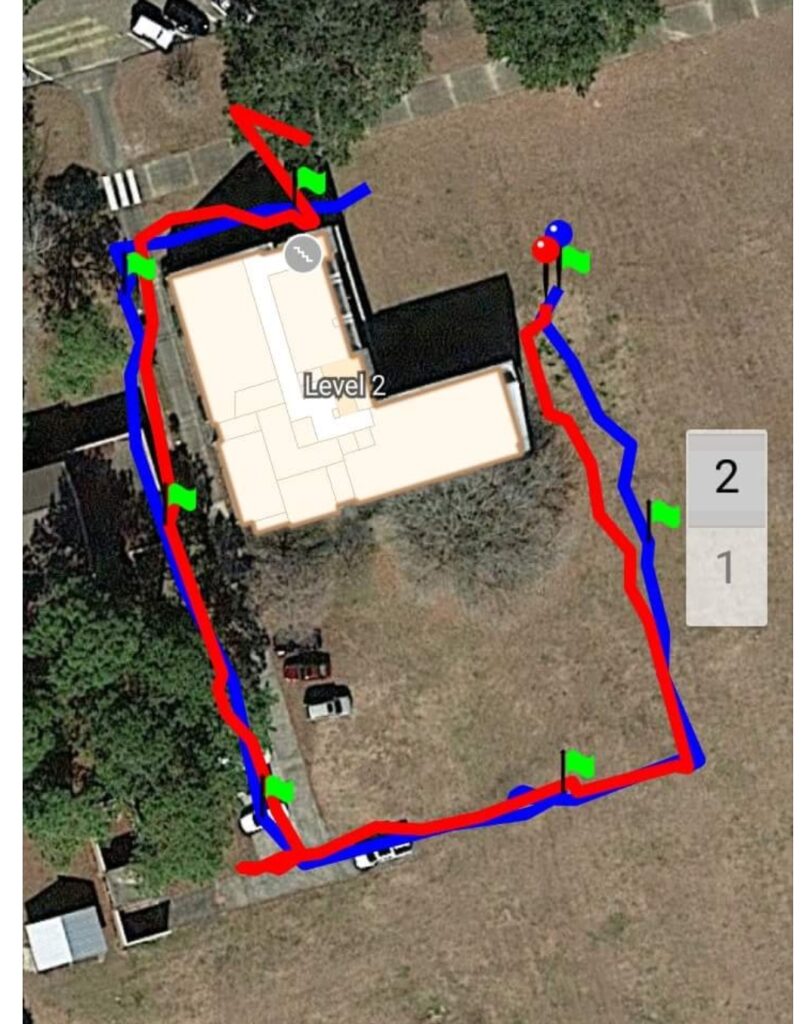Skip to the content
Tracking is the competition form of canine search and rescue. In a tracking test, the dog and handler team follow the scent trail made by someone walking earlier in the day.
The goal is to use the scented track to locate the article(s) left by the tracklayer.
The owner follows the dog on a long leash. The track may have may have obstacles such as creeks or roads to cross, and can have areas with no vegetation such as parking lots.
Tracking tests are held in fields of grass or in urban areas such as industrial parks or college campuses.
The Judging Process
During the tracking test, the judge is watching both the handler and the dog.
They are verifying the dog is working the scent and successfully navigating the track, rather than the handler guiding the dog the direction they believe the track has been placed. They are watching to see if a dog can scent an article and searches an area for it.
This is important if the article should blow away while the track is aging or of someone walked by and picked up the article. If the dog searched for the article and it disappeared before the track was worked, the dog still has the potential to pass the test.
Necessary Gear
Harness – The dog is required to wear a harness while tracking and the lead must be attached to the harness. It must be made in a manner to have minimal restriction on the dog’s movement.
Examples:
Leashes – Can be made from a variety of substances. This includes cotton or polyester rope or biothane. Leads can be round or flat. The lead must be between 20 to 40 feet long. It is helpful for the handler to place a knot or rivet or some other marker on the lead to indicate 10 foot increments.
Examples:
Tests and Titles
In AKC tracking there are two introductory level titles. These are Tracking Dog (TD) or Tracking Dog Urban (TDU). In order to enter a test for the TD or TDU, a dog must have a certification from a tracking judge (or someone who has put a TDX or VST title on a dog within the past 10 years). The certification is essentially a test track to determine the team is ready to test.
The TD track is 440-500 yards long with 3-5 turns and the track is aged 30 minutes to 2 hours. There will be a start article at the start flag and a glove at the end of the track. Articles can be a bandana, a potholder, a sock, hat, wallet, glove or other small personal item.
The TDU track is 400-500 yards long with 3-5 turns and the track is aged 30 minutes to 2 hours. The TDU is different from the TD in the surface where the track is laid. The TDU must have 10-30% of the track on some non-vegetated surface. This may be paved sidewalks, lightly travelled roads, baseball diamond, parking lot or other non-vegetated surfaces. One other difference is the TDU track will have one additional article to find along the middle of the track.
Once a dog has earned an introductory title, the team can move on to the advanced tracking levels. These are Tracking Dog Excellent (TDX) and Variable Surface Tracking (VST).
The TDX track is 800-1000 yards long and has 5-7 turns. The track is aged 3-5 hours and the team must locate 2 additional articles along the track. The track itself is more difficult with the addition of cross tracks laid to create a challenge to distinguish between two different track scents (laid by different people). There are also at least 2 obstacles on the track. This may include crossing a stream or a fence, walking through the woods or a plowed field.
The VST track is 600-800 yards long and can have 4-8 turns. This track is aged 3-5 hours and the team must locate 4 different articles along the track. The VST track must have non-vegetated surfaces that total at least 1/3 and up to 2/3 of the total track. These non-vegetated surfaces can be parking lots, concrete, asphalt, gravel, sand, or mulch. For the VST, one of the turns must happen on a non-vegetated surface and this is called the Moment of Truth (MOT) turn.
Finally, you’ve made it through each of the tracking titles and have your TD (or TDU), TDX and VST. Your dog can now use the title Champion Tracker (CT)!

